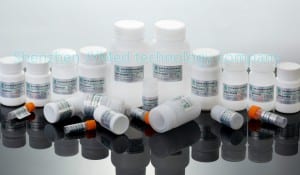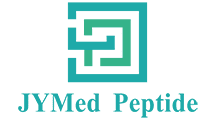This work was supported by grant from the National Natural Science Foundation of China (No.81201985 and 81373947) and the National for New Drug Innovation and Development of China (No. 2011ZXJ09202-13; No. 2012BAK25B00).
The Company applies ASC 718-10, “Share-Based Payment,” which requires the measurement and recognition of compensation expense for all share-based payment awards made to employees and directors, including employee stock options under the Company’s stock plans, based on estimated fair values. ASC 718-10 requires companies to estimate the fair value of equity-based payment awards on the date of grant using an option-pricing model. The value of the portion of the award that is ultimately expected to vest is recognized as expense over the requisite service periods in the Company’s consolidated statement of operations.
Tousoulis, D., Kampoli, A. M., Tentolouris, C., Papageorgiou, N. & Stefanadis, C. The role of nitric oxide on endothelial function. Curr Vasc Pharmacol. 10, 4–18 (2012).
In Europe, the period of orphan drug exclusivity is ten years, although it may be reduced to six years if, at the end of the fifth year, it is established that the criteria for orphan drug designation are no longer met, in other words, when it is shown on the basis of available evidence that the product is sufficiently profitable not to justify maintenance of market exclusivity. In September 2016, the EMA’s Committee for Orphan Medicinal Products adopted a positive opinion recommending zilucoplan for the treatment of PNH for designation as an orphan medicinal product to the European Commission, which granted us orphan designation for zilucoplan for the treatment of PNH in October 2016. Additionally, in July 2017, we announced that the FDA granted orphan drug designation to zilucoplan for the treatment of PNH.

For proteome analysis, two-dimensional polyacrylamide gel electrophoresis was performed. Briefly, the heart tissue (n = 3) was homogenized in a homogenization buffer containing 30 mM Tris, 7 M urea, 2 M thiourea, 4% CHAPS, and 40 mM DTT. The lysates obtained were centrifuged at 15, 294 g for 30 minutes at 4 °C; the supernatant was collected and stored as aliquots at −80 °C until use. The samples were pre-treated with 2D Clean-Up Kit (GE Healthcare, Piscataway, NJ, USA) to remove the interfering components. The protein concentration of each sample was determined using the Bradford method. A total of 1 mg of protein was loaded onto a 24-cm linear IPG strip (pH 3–10, Amersham Biosciences, Piscataway, NJ, USA) for first-dimension isoelectric focusing. The strips were placed into a Ettan IPGphor 3 (GE Healthcare, Piscataway, NJ, USA) and rehydrated at 50 V for 12 hours, and the proteins were separated based on their protein isoelectric point with a protocol as follows: 250 V with linear climb for 30 minutes, 500 V with linear climb for 30 minutes, 1000 V with linear climb for 60 minutes, 4000 V with rapid climb for 60 minutes, 8000 V with linear climb for 5 hours, and 8000 V with rapid climb until a level of 60000 V-h was reached. After first-dimension isoelectric focusing, the IPG strips were equilibrated for 15 minutes in a buffer containing 50 mM Tris-HCl, pH 8.8, 30% glycerol, 7 M urea, 2% SDS, and 1% DTT, then further treated in a similar buffer containing 4% iodoacetamide instead of DTT for 15 minutes and directly applied onto 12% homogeneous SDS-PAGE gels for 6 hours electrophoresis using a Ettan DALT six system (GE Healthcare, Piscataway, NJ, USA). The gels were stained by PhastGel Blue R according to the manufacturer’s instructions. The stained gels were scanned and then analyzed using Image Master 2D platinum 7 software (GE Healthcare, Piscataway, NJ, USA). The intensity of each spot was quantified by calculating the spot volume after the gel image had been normalized. Each sample was processed in triplicate to ensure reproducibility, and the Student’s t-test was used to evaluate the average change in spot abundance corresponding to each target spot across the gels. Spots with more than a 2-fold change (either increasing or decreasing) in density were considered to be differentially expressed (paired t-test, p ≤ 0.05) and were selected for further identification via mass spectrometry analysis9. Briefly, differently expressed spots were manually excised from the gels, destained and dehydrated in acetonitrile. Subsequently, they were subjected to rehydration with a trypsin solution and in-gel digestion overnight at 37 °C. For each spot, 0.75 μL of digested peptides were spotted onto a MALDI-TOF target (GE Healthcare, Piscataway, NJ, USA) and allowed to dry. Then, 0.75 μL of matrix solution (saturated solution of α-cyano-4-hydroxycinnamic acid in 50% v/v acetonitrile and 0.5% v/v trifluoroacetic acid) was applied to the dried sample, and tryptic peptide masses were acquired on an Ettan MALDI-ToF Pro mass spectrometer (GE Healthcare, Piscataway, NJ, USA). Mass spectra were acquired in reflectron mode with an accelerating voltage of 20 kV using the Ettan MALDI Evaluation software (GE Healthcare, Piscataway, NJ, USA). Peptide masses were internally calibrated using the 842.509 and 2211.105 m/z trypsin autolysis peptides. Databases were searched for peptide identification using MASCOT Distiller 2.1 (Matrix Science, http://www.matrixscience.com).
When uncertain tax positions exist, the Company recognizes the tax benefit of tax positions to the extent that the benefit will more likely than not be realized. The determination as to whether the tax benefit will more likely than not be realized is based upon the technical merits of the tax position as well as consideration of the available facts and circumstances. The Company’s practice is to recognize interest and/or penalties related to uncertain tax positions in income tax expense.
(A) Representative F480-stained sections of UUO kidneys from P311+/+ (n = 6) and P311−/− (n = 6) mice. Black arrowhead indicates the F480-positive cells. Bottom panel: negative controls for the immunohistochemical staining of F480 on the obstructed kidneys from both P311+/+ and P311−/− mice. (B) The graph represents the total number of F480-positive sections from five contiguous high-powered fields per kidney section. (A) and (B) are representative of at least three similar experiments. Scale bar: 100 μm. Data are presented as the mean ± SD. *P < 0.05; **P < 0.01.
After 1 month (30 days) of AAS, the animals were examined by echocardiography, and the rats having left ventricular wall thickness 20% thicker than that in sham group were identified as succeeded in modeling and randomly assigned either to model groups, including AAS1M and AAS2M, or drug treatment groups, including QSYQ, ASIV, DLA, R1, DO, ASIV+DLA, ASIV+R1, ASIV+DO, DLA+R1, DLA+R1+DO, and ASIV+DLA+R1 group, 6 animals in each group. The animals in AAS1M were sacrificed for assessment of parameters concerned after echocardiographic analysis. In Sham and AAS2M groups, the animals received saline daily by gavage for the succeeding 1 month at a dose of 4 mL/kg/day. Over the same period of time, the animals in drug treatment groups received indicated drugs by gavage at following doses: 0.8 g/kg/day (QSYQ), 0.528 mg/kg/day (ASIV), 3.392 mg/kg/day (DLA), 0.48 mg/kg/day (R1), and 3.2 mg/kg/day (DO). Two months after AAS, the animals were examined by echocardiography once again and then sacrificed for parameter assessment.

Our development plans include exploring the potential of complement inhibition, including C5 inhibition, to treat complement-mediated diseases for which complement inhibition has not been fully validated. The scientific evidence to support the feasibility of developing products to treat such disease by C5 inhibition is limited. Accordingly, our focus on treating these diseases may not result in the discovery and development of commercially viable products.
But the root causes for some quality failures can be extremely difficult to sort out. This is becoming particularly evident in the valsartan recalls, which began in July 2018 after traces of the toxic nitrosamine, N-nitrosodimethylamine (NDMA), were found in the APIs used to manufacture generic sartans, the angiotensin inhibitor blockers (ARBs) prescribed to some patients to treat high blood pressure.
Liao, F. Herbs of activating blood circulation to remove blood stasis. Clin Hemorheol Microcirc. 23, 127–131 (2000).
Thanks. You are right. I was not aware about chronic hypoglycemia. I have done a quick lookup and found the following possible causes. Interesting. – Excessive alcohol consumption. – Liver hepatitis – Kidney disorders – Insulin overproduction (due to tumor of the pancreas and/or enlargement of beta cells of the pancreas) – Hormone deficiencies.
Form 10-K Ra Pharmaceuticals, Inc. For: Dec 31 | Lanreotide Related Video:
The purchaser fulfillment is our primary focus on. We uphold a consistent level of professionalism, high quality, credibility and service for Lanreotide Acetate Exporter, Thymopentin Acetate Gmp Provider, Octreotide, We integrate design, manufacture and export together with more than 100 skillful workers, strict quality controlling system and experienced technology.We keep long term business relationships with wholesaler and distributors form more than 50 countries, such as USA, UK, Canada, Europe and Africa etc.







